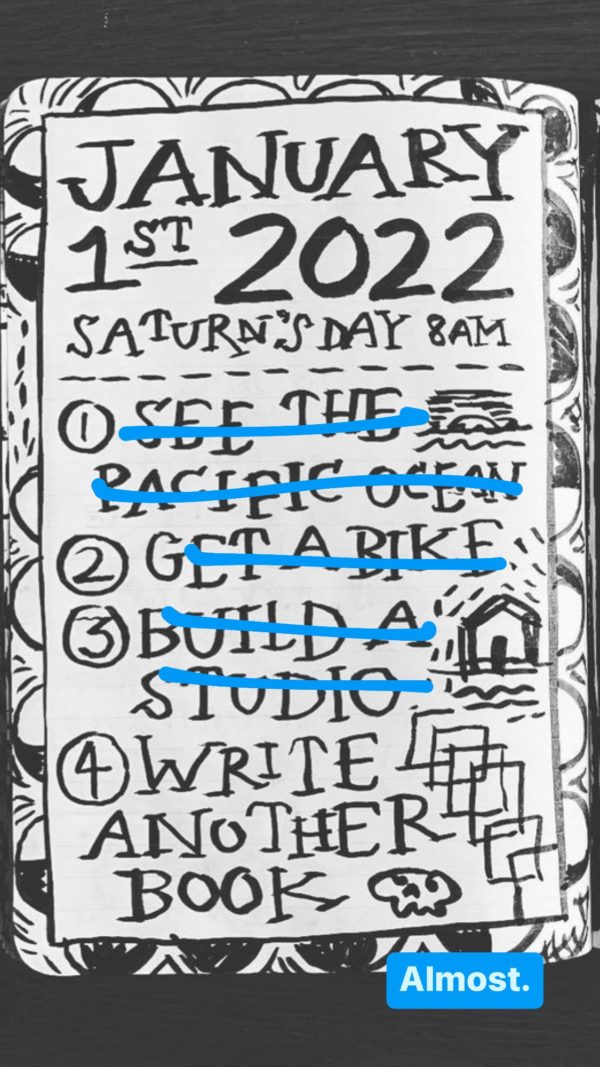
Guess I know what I’m doing this year…



Guess I know what I’m doing this year…


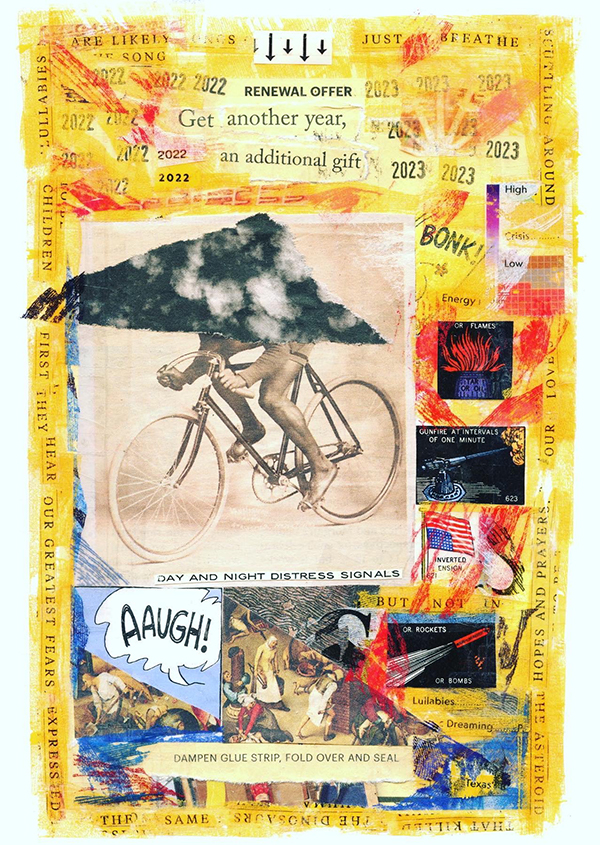
If you liked this list, you’ll love my newsletter.
Read my top 100 lists from previous years here.

Was going through old photos from the year and came across these funny signs at various nurseries I went to with my wife. Gardening remains so rich in metaphor…
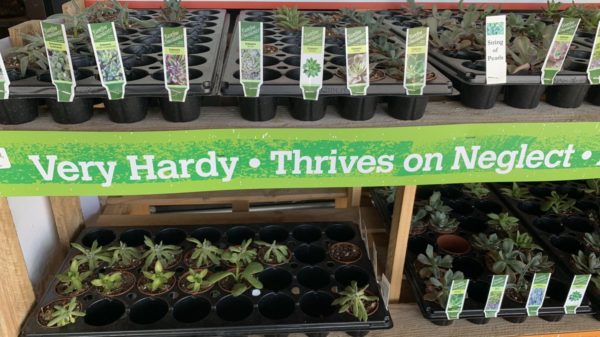
In the most recent newsletter, I wrote about how I’m spending “dead week” — the no man’s land on the calendar between Christmas and New Year’s Eve.
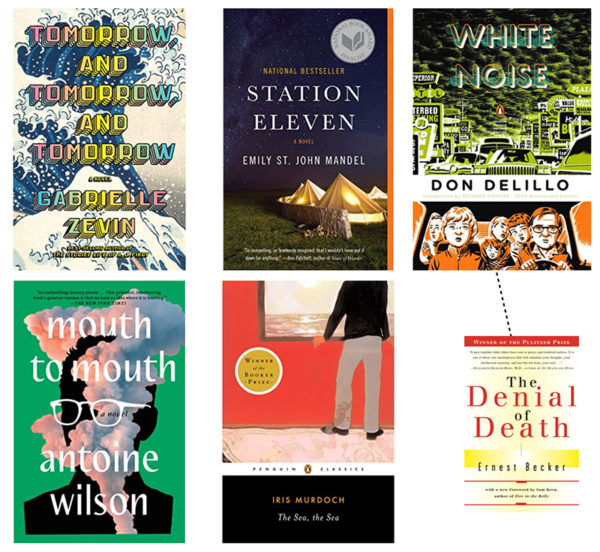
I read a terrific batch of novels this year. Gabrielle Zevin’s Tomorrow, and Tomorrow, and Tomorrow surprised and delighted me up until the very end, and I think that book deserves any acclaim that comes its way. Don Delillo’s White Noise was spectacular and also had an extra layer of meaning, as I read it right after reading Ernest Becker’s The Denial of Death, an obvious influence. I liked Emily St. John Mandel’s Station Eleven way more than the TV show, which I understand is a somewhat controversial opinion? (Every year I read a bestseller and every year I’m reminded that all bestsellers have this in common: they are page-turners, they make you want to turn the page.) Iris Murdoch’s The Sea, The Sea drove me absolutely crazy, but I have the strange urge to re-read it, which is how I know if something is good. Antoine Wilson’s Mouth to Mouth made me want to go to bed early so I could stay up reading it.
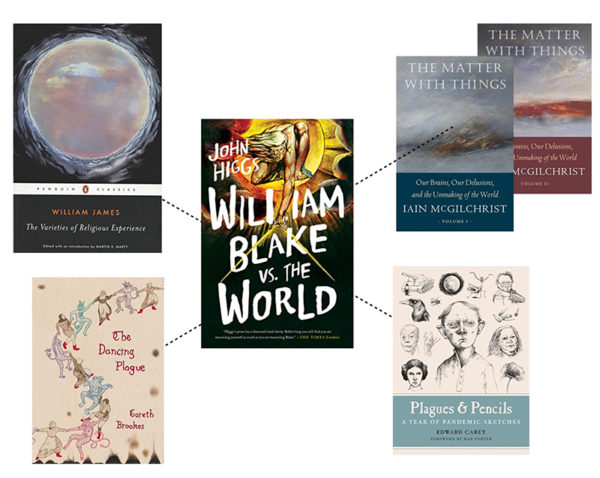
At the very end of the year I read John Higgs’s William Blake vs. the World, a book which somehow managed to connect to so much of my year’s reading: in particular, William James’s The Varieties of Religious Experience. (A wonderful book. James could write his ass off.) The sections on neuroscience and hemisphere connected with a lot of Iain McGilchrist’s massive, two-volume The Matter With Things: Our Brains, Our Delusions, and the Unmaking of the World. As for Blake himself, I see his influence in Gareth Brookes’ The Dancing Plague and Edward Carey’s Plagues and Pencils: A Year of Pandemic Sketches.

My comfort reading is books about music. There is a perfect 250-page book in the 400 pages of Dan Charnas’s Dilla Time. I read an essay or two from W.A. Mathieu’s The Listening Book: Discovering Your Own Music every night at the dinner table. Craig Brown’s 150 Glimpses of the Beatles had an outstanding ending — I love it when a book sticks the landing. I was surprised I didn’t connect with David Toop’s Ocean of Sound more, as it’s full of writing about music I love. (It might be a commode book — and I mean that as a compliment — one you dip in and out of at random.) I had a magical visit to a Barnes & Noble on a trip to Philly when I took a chance that they’d have Mike McGonigal’s 33 1/3 entry on My Bloody Valentine’s Loveless and they did. Chuck Klosterman’s The Nineties: A Book was about much more than music, but we’ll throw it in here. A big nostalgia trip for me.

I read a bunch of books about movies and making movies. Kyle Buchanan’s Blood, Sweat & Chrome: The Wild and True Story of Mad Max: Fury Road made me like that movie even more than I already did. It’s a miracle it got made. I read Aljean Harmetz’s The Making of The Wizard of Oz after having an unexpectedly emotional reaction to watching Dorothy’s adventures with my kids for the first time. Matt Zoller Seitz’s The Wes Anderson Collection mixes handsome art and interviews with the filmmaker. I had been looking forward for years to Ander Monson’s Predator: A Memoir, a Movie, an Obsession, a great case for studying something you love in depth.
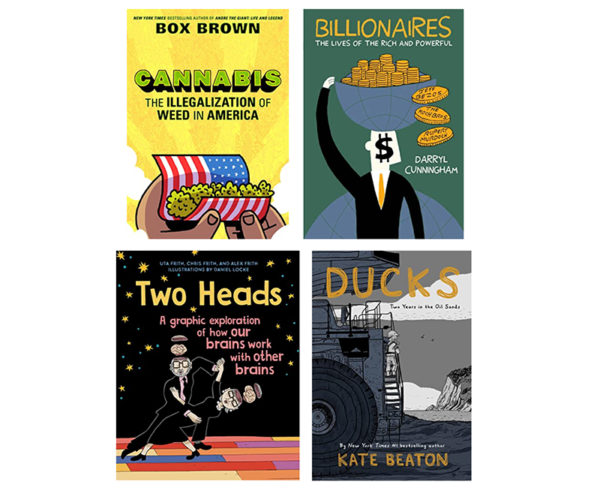
This is a golden age for non-fiction comic books. I thought Box Brown’s Cannabis: The Illegalization of Weed in America was a real showcase of his talents. (See also his strip Legalization Nation on his Instagram.) I also liked Darryl Cunningham’s Putin’s Russia and Billionaires. A book that seemingly came out of nowhere was Two Heads: A Graphic Exploration of How Our Brains Work with Other Brains. I admired the cartooning in Kate Beaton’s Ducks, how she managed to stay loose while dealing with a serious subject matter.
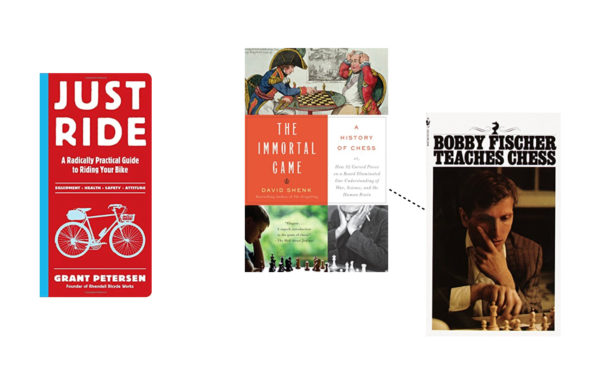
My major obsession this year was my bicycle, and I synced up immediately with the spirit of Grant Petersen’s Just Ride: A Radically Practical Guide to Riding Your Bike. I also loved reading his “Bicycle Sentences” illustrated by Betsy Streeter and published on Instagram. (They just published a riding journal of them.) I thought Jody Rosen’s Two Wheels Good: The History and Mystery of the Bicycle would be right up my alley, and parts definitely were, but I ended up wishing it was tighter and shorter and felt less like magazine pieces stitched together.
For a brief, beautiful few weeks my son and I were playing chess together every day. I loved David Shenk’s The Immortal Game: A History of Chess, especially the brilliant structure of alternating the chess moves of the famous game with the historical chapters. I also made my way through the classic, Bobby Fischer Teaches Chess.

I read some great art books, of course. Anni Albers’ On Weaving is unbelievably gorgeous. Martin Gayford’s Spring Cannot Be Cancelled: David Hockney in Normandy was a wonderful read, my first of the spring, about one of my favorite artists. Lourdes Grobet’s Lucha Libre: Masked Superstars of Mexican Wrestling is out-of-print but worth tracking down. (Fun fact: her son was the cinematographer for Nacho Libre and the second season of The White Lotus.)
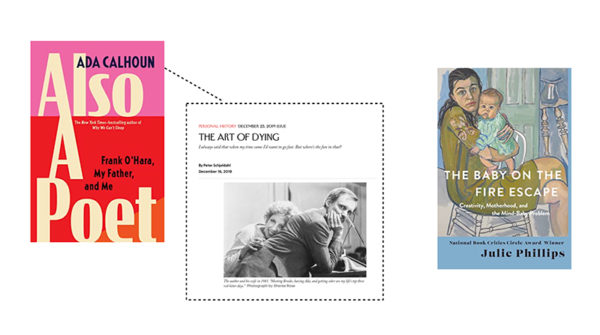
I’m always interested in the intersection between art and family, and for years have been trying to figure out my own book on the subject. Ada Calhoun’s Also A Poet: Frank O’Hara, My Father, and Me was a really beautiful memoir, and it has added power and depth if you read “The Art of Dying” by her father, the art critic Peter Schjeldahl, beforehand. Julie Philips’ The Baby on the Fire Escape: Creativity, Motherhood, and the Mind-Baby Problem will go up at the top of my list of favorite books about art and motherhood.
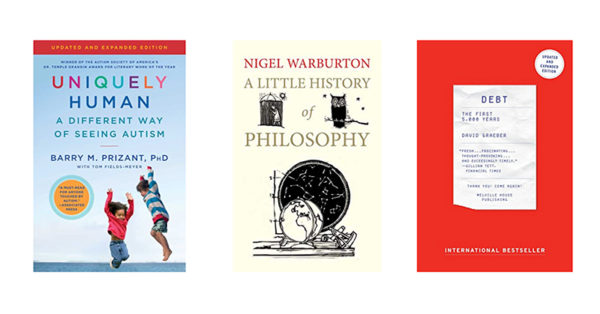
My youngest son was diagnosed ASD this year, and while I’ve read a bunch of books about autism, Barry M. Prizant and Tom Fields-Meyer’s Uniquely Human: A Different Way of Seeing Autism is probably the first book I will recommend to family and friends. An extremely hopeful read.
And two books I liked that somehow don’t fit in elsewhere:
I love the “Little Histories” series, and Nigel Warburton’s A Little History of Philosophy didn’t disappoint.
David Graeber’s Debt: The First 5000 Years was long, but very good.
* * *
If you liked this list, you will enjoy my newsletter, where I share what I’m reading every week.
I’ve been doing a year-end summary of my reading since 2006. You can read them all here.
I hope you read widely and adventurously, but more importantly, I hope you read what you want to read! Life is short and time is precious, and any book that doesn’t have you turning the pages is not the book for you right now.
Having trouble reading? Here’s how to read like an artist.
This site participates in the Amazon Affiliates program, the proceeds of which keep it free for anyone to read.